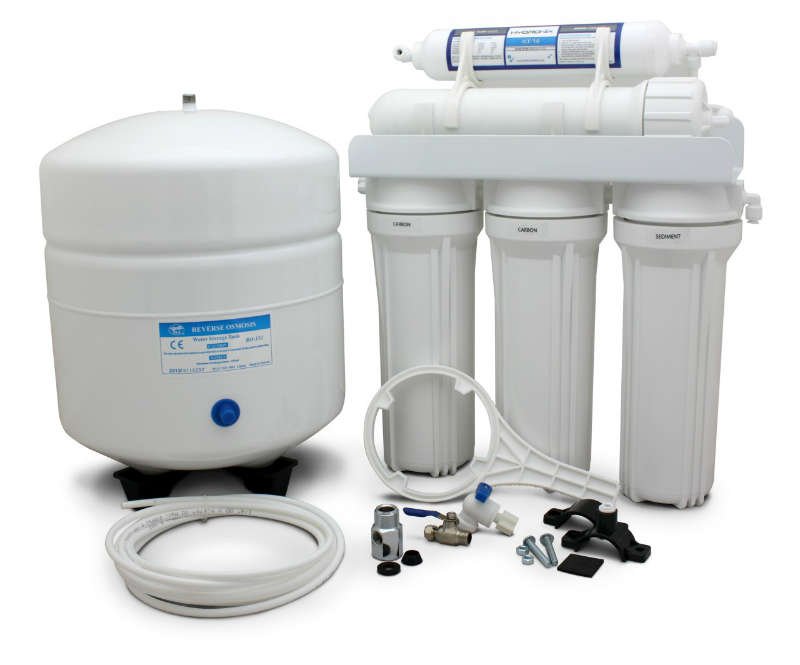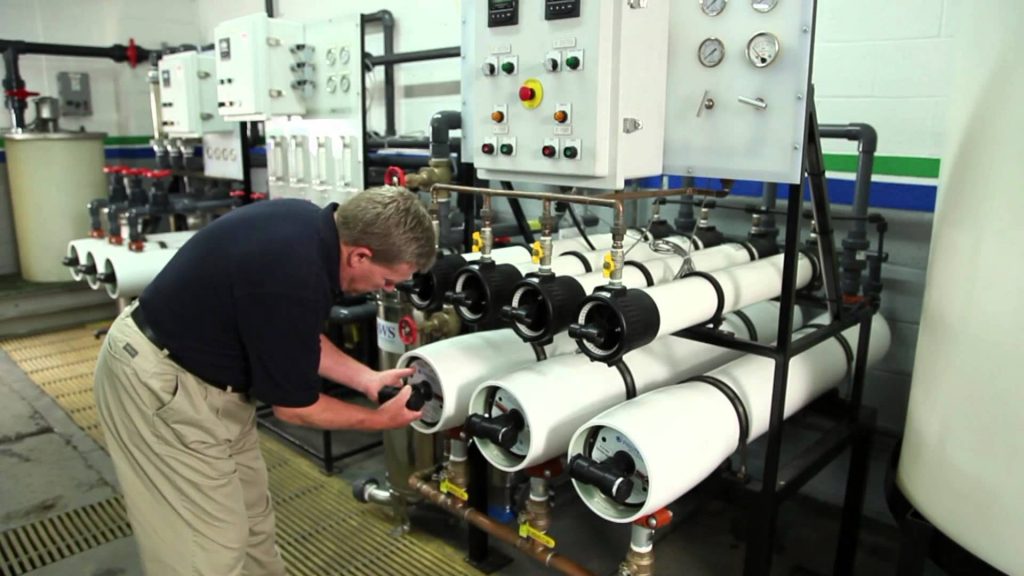Table of Contents

What is all involved in the regular maintenance of my reverse osmosis system?
Regular maintenance of your reverse osmosis system should include inspection and cleaning or replacement of your filters, inspection, and cleaning or replacement of your membrane, inspection and repair or replacement of all operating parts (such as the faucet and storage tank), and annual sanitizing of the system.
How often should I perform maintenance on my reverse osmosis system?
How often you need to change your filters or clean and maintain other parts will depend largely on the quality of your water supply. Filters are there to remove particles from the water, and once a filter is clogged, it no longer works properly. We detail below when to change your reverse osmosis water filters.
How often should I change my reverse osmosis system filters?

If you have a first-stage filter, located in the water supply line before the water reaches the membrane, this filter should be changed every 6-9 months. This filter removes sediment and large particles before the water reaches your membrane, allowing the membrane to function better.
Many systems also contain a second-stage filter, again located before the water reaches the membrane. This filter removes chlorine and other contaminants that can affect the taste and odor of your water. If you have a carbon filter in your system for this purpose, replace the filter every 6-9 months.
Your reverse osmosis system may also contain a final filter, located after the membrane, that is designed to “polish” the water and remove any odors or tastes still remaining. This carbon filter should also be replaced every 6-9 months.
How often should I clean and/or replace my reverse osmosis membrane?

How do I sanitize my reverse osmosis system?
Consult your owner’s manual for complete instructions on how to sanitize your specific system. After turning off your water supply, you will first completely drain the system of water and then remove all of the filters, including the membrane. Once the system is drained and all filters are removed, place 2-3 tablespoons of unscented household bleach into the pre-filter (first stage) housing.
Once all the housings are replaced, turn your water supply back on to fill your entire reverse osmosis system, which should take about 5-10 minutes. Check for leaks as the system refills. Open the faucet just until water begins to flow out, then close the faucet and let the system set for at least 30 minutes.
After this time, completely drain the bleach water solution from your system and let the water run through the entire system for at least 5 minutes. Drain the system completely and repeat the fill and 5-minute flush process once more.
Replace all filters and your membrane, (this is a great time to install new filters if you are due for a change), then refill your system. It will take a few hours for your reverse osmosis system to refill our holding tank.
What else do I need to know?
Regular maintenance of your reverse osmosis water system will keep it running smoothly for years to come. A well-maintained system can last for 10-15 years, and your maintenance needs will depend largely on your water quality. Consult your owner’s manual for questions about your specific unit, and always contact your manufacturer directly with any questions you have about maintaining your reverse osmosis system. You might be thinking about purchasing a new reverse system if you face problems frequently, we have listed best ro systems on our website. Checkout them on our homepage.
